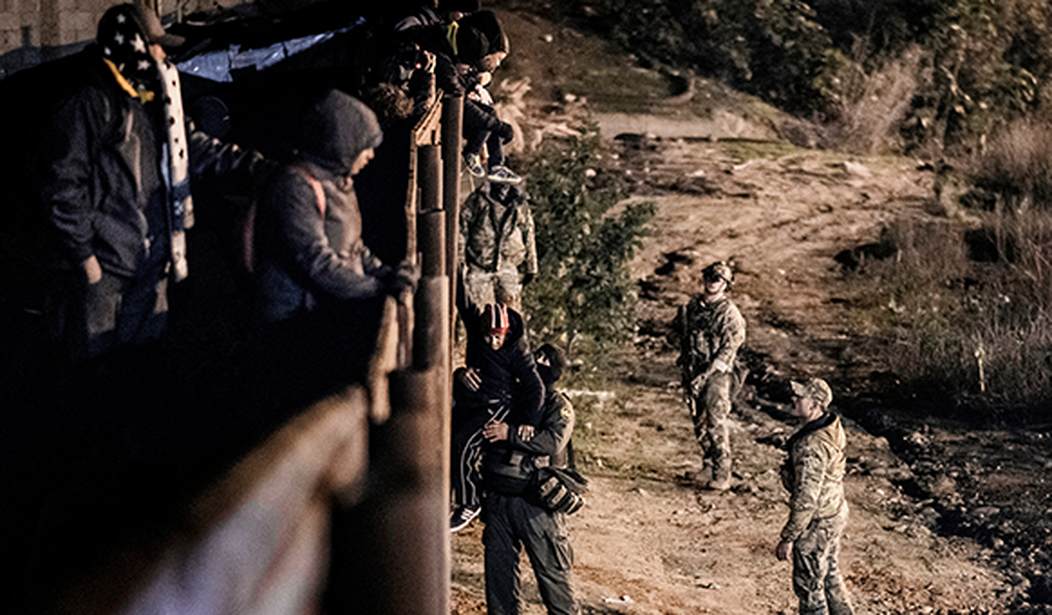I’m guessing that more than a few of you reading the question in the title of this article immediately nodded your heads and said, so what else is new? But there’s more to this idea than a simple question of whether or not it happened at the AP and most of the major newspapers and cable news outlets. A bit of careful examination should produce some evidence of when and how they did it rather than relying on our own anecdotal impressions of the coverage the topic has received. That’s what the Free Beacon did this week, tracking down the changes in the language that’s being used when the media turns their attention to the southern border at all. And that language modification didn’t just evolve on its own. It can be found right in the AP style guide, which is used by a preponderance of outlets.
While internal Customs and Border Protection documents repeatedly refer to an immigration “surge” at the border, according to records reviewed by the Washington Free Beacon, the AP recommends journalists no longer use such descriptions to avoid offense and maintain supposed “neutrality.” Other documents, circulated internally throughout Customs and Border Protection in May, instruct officials on processing “the surge of undocumented individuals as efficiently as possible.”
The move by AP, a response to left-wing activists who demanded gentler language from reporters when covering immigration, fundamentally changed how newsrooms across the country covered the Biden administration’s response to a historical influx of migrants in the president’s first 100 days in office. A range of outlets, from local newspapers to national publications like the Washington Post, look to the AP for language guidance.
The AP pressed news outlets in March to “avoid imagery conjuring war or natural disaster, which could portray migrants as a negative, harmful influence. Avoid emotive words like onslaught, tidal wave, flood, inundation, surge, invasion, army, march, sneak, and stealth.” But Customs and Border Protection officials told the Free Beacon that they hold weekly meetings they call “surge meetings” to discuss ways to process the thousands of migrants flooding into the country.
So how did the AP arrive at this decision? There were no doubt several factors, but one of them was certainly an op-ed in the Washington Post by immigration activist Julio Varela. He proudly admits that he contacted the Associated Press to complain about their use of the word “surge” and other terms. He goes on to say that they responded to his demands, saying that his message came “at the perfect time.” Shortly thereafter, the style guide was changed.
The Free Beacon goes on to cover other forbidden words, including “crisis.” That’s a change that appears to have been made in response to a direct call from the Biden administration. All of this fits in with a pattern that’s been observed for quite a while now. When the BLM riots were sweeping through our cities last year, the AP squelched the use of the word “riot” and directed that “unrest” be used instead. This was part of their larger call to change the tone of the coverage entirely. “Focusing on riots and property destruction rather than underlying grievance has been used in the past to stigmatize,”
Some of these word choices are not only biased and offensive, but they’re flatly incorrect in terms of language usage. The reason given for avoiding words like surge or flood was to “avoid portraying migrants as a negative, harmful influence.” You do realize that the vast majority of those people arrived at the border with the intent of attempting to violate federal law and cross the border illegally, right? That means they are engaged in criminal behavior. Since when did we stop referring to criminals in ways that portray them as a negative influence? Are we supposed to start referring to muggers as role models?
The bias has been obvious for a long time, but it’s definitely worthwhile to look at the AP Style Guide and see how it’s become embedded in the media culture as official policy. And keeping track of the liberal activists who now seemingly have the power to dictate what does or doesn’t go into the style guide is educational as well.








Join the conversation as a VIP Member